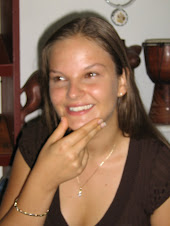
Sugarcane
Sugarcane was originally from tropical South Asia and Southeast Asia. Different species likely originated in different locations with S. barberi originating in India and S. edule and S. officinarum coming from New Guinea. The thick stalk stores energy as sucrose in the sap. From this juice, sugar is extracted by evaporating the water. Crystallized sugar was reported 5000 years ago in India.
Around the eighth century A.D., Arabs introduced sugar to the Mediterranean, Mesopotamia, Egypt, North Africa, and Spain. By the tenth century, sources state, there was no village in Mesopotamia that didn't grow sugar cane. It was among the early crops brought to the Americas by Spaniards. Brazil is currently the biggest sugar cane producing country.
The methods of growing sugarcane and processing sugar were technologies transferred to China from India in the 7th century, during the reign of Harsha (r. 606–647) over North India and the reign of Emperor Taizong (r. 626–649) over Tang China. Two sugar makers summoned from leaders of Mahabodhi Temple traveled alongside a delegation of Buddhist monks to China, where they successfully taught the Chinese how to grow sugarcane and produce sugar.
A boiling house was used in the 17th through 19th centuries to make sugarcane juice into raw sugar. These houses were add-ons to the sugar plantations in the western colonies. This process was often conducted by the African slaves, under very poor conditions. The boiling house was made of cut stone. The furnaces were rectangular boxes of brick or stone with openings near to one side, and at the bottom to stoke the fire and pull out the ashes. At the top of each furnace were up to seven copper kettles or boilers, each one smaller than the previous one and hotter.
The cane juice was placed in the first copper kettle which was the largest. The juice was then heated and a little lime added to remove impurities. The juice was then skimmed then channeled to the other copper kettles. The last kettle, which was called the 'teache' was where the cane juice became syrup. It was then put into cooling troughs where the sugar crystals hardened around a sticky core of molasses. The raw sugar was then shoveled from the cooling trough into hogsheads (wooden barrels) where they were put in the curing house.
Sugarcane was, and still is, extensively grown in the
Caribbean, where it was first brought by Christopher Columbus during his second voyage to The Americas, initially to the island of Hispaniola (
Dominican Republic) . In colonial times, sugar was a major product of the triangular trade of New World raw materials, European manufactures, and African slaves.
France found its sugarcane islands so valuable it effectively traded its portion of Canada, famously dubbed "a few acres of snow," to Britain for their return of Guadeloupe, Martinique and St. Lucia at the end of the Seven Years' War. The Dutch similarly kept Suriname, a sugar colony in South America, instead of seeking the return of the New Netherlands (New Amsterdam).
Cuban sugarcane produced sugar that received price supports from and a guaranteed market in the USSR; the dissolution of that country forced the closure of most of Cuba's sugar industry. Sugarcane remains an important part of the economy of Belize, Barbados, Haiti along with the Dominican Republic, Guadeloupe, Jamaica, and other islands. The sugarcane industry is a major export for the Caribbean, but it is expected to collapse with the removal of European preferences by 2009.
Sugarcane production greatly influenced many tropical Pacific islands, including Okinawa and most particularly Hawaii and Fiji. In these islands, sugar cane came to dominate the economic and political landscape after the arrival of powerful European and American agricultural business, which promoted immigration from various Asian countries for workers to tend and harvest the crop.
Sugar-industry policies eventually established the ethnic makeup of the island populations that now exist, profoundly affecting modern politics and society in the islands.
Cuba is a major grower of sugarcane, which is used to produce sugar and provide the ethanol used in making gasoline-ethanol blends (gasohol) for transportation fuel. In India, sugarcane is sold as jaggery and also refined into sugar, primarily for consumption in tea and sweets, and for the production of alcoholic beverages.










